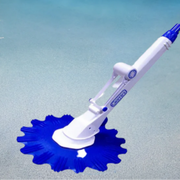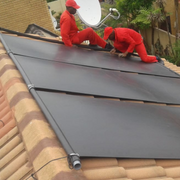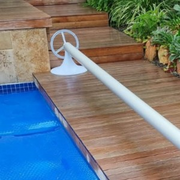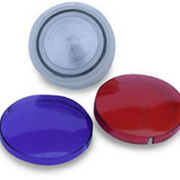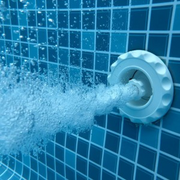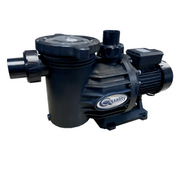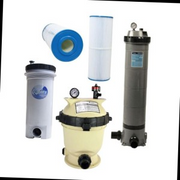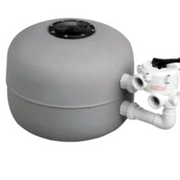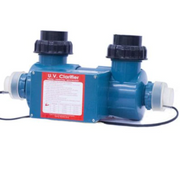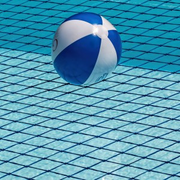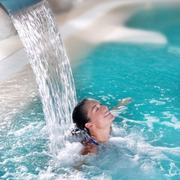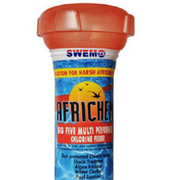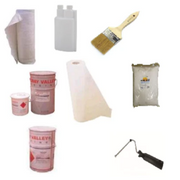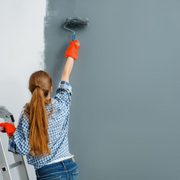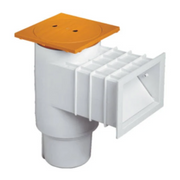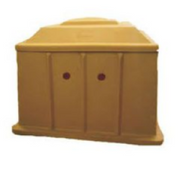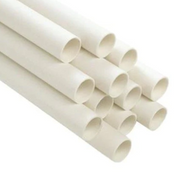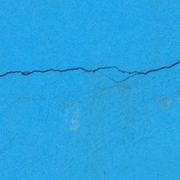Pool replacement can be a long and costly expenditure. If you are looking for a more cost-effective alternative, you might want to consider resurfacing your fibreglass pool. This is necessary when your pool experiences deterioration, colour deterioration, chalking and cracks. The old top coat needs to be removed and the pool needs to be repaired by eliminating osmosis, cracks and other issues.
After the repair work is done, your fibreglass pool needs to get a new layer of fibreglass to make it smooth, non-permeable and drastically sturdier than it was before. The process concludes with applying a high-quality pliable top gel coat that preserves your pool for roughly another 7 to 13 years.
This last step is arguably the most important step of the whole process and is usually done by a professional. If you, on the other hand, are up for the job and looking to save some money, consider the following steps as your DIY Fibreglass-painting crash course:
Preparing Your Fibreglass Pool
- Use tape to mark off the areas of your fibreglass pool that do not need to receive a top coat. Firmly press the edges of the tape down to avoid spreading of wet top coat. This will also protect the area throughout the sanding process. Be sure to use adequate tape, like painter’s tape to prevent any leftover residue.
- Inspect the surface of the pool for any cracks. Smooth out the edges of the cracks you find, using a grinder with a small sanding disk. The top coat needs to be able to flow and smoothly fill all the cracks wider than 1,6 mm. For this to be achieved, the edges of the cracks need to be rounded.
- You now have to sand the entire top coat surface with sandpaper. The sandpaper leaves small, beneficial grooves that enable the new coat to bond to the surface.
- Use acetone to wipe the sanded area with a lint-free cloth. Refold the cloth every now and then to remove the maximum amount of debris. Do not rub in a circle, since this will not effectively remove leftover debris.
Applying A Clear / Coloured Top Coat
Recommended paint / top coat for your fibreglass pool
- Choose a day when the temperature is between 21 and 30 degrees Celsius, without the chance of rain. This recommended temperature allows each batch of gel coat a 10- to the 20-minute time frame for application.
- Be sure to mix the top coat in the can to evenly distribute the can contents.
- Pour the top coat into a plastic mixing container, as well as a sufficient amount of catalyst. (Refer to the manufacturer's instructions for mixing ratios).
- Use a disposable paintbrush to paint a layer of the top-coat mixture to the fibreglass pool surface. Cracks and nicks will need additional coating. Repeat this process over the entire pool surface.
- The top coat needs about 24 hours to completely dry. You can press your fingers against the top coat to test if it has dried yet. If it still has not dried completely, wait another few hours and check again.
Finishing
- Examine the newly-coated surface for any ridges.
- The ridges need to be sanded with sandpaper and a sanding block or with a power sander until it is flush with the pool's surface.
- Remove the grooves made by the sandpaper by spraying the top coat surface and sanding it with wet sandpaper that has a higher grit. Repeat this process until all sanding lines are gone.
- You can now remove the tape and wipe the entire pool surface down with a damp, lint-free cloth to get rid of any debris.
- Use surface tissue to ensure a final smooth fibreglass finish.
People also ask:
What is the best paint for a fibreglass pool?
Epoxy paint is considered the best paint option if you want to paint a fibreglass pool, due to its chemical-and water resistance as well as overall strength. This, however, does not mean that you can slack with its maintenance. At least twice a year, the painted surface will need a thorough cleaning.
Can you paint a fibreglass pool?
Yes, Painting a fibreglass pool is recommended, you just have to be sure that the paint you choose is compatible with fibreglass and that you adequately prepare the pool surface before painting it.
How long does epoxy pool paint last?
The average lifespan of an epoxy-painted pool is about 8- to 10 years. This is considering well-maintained pool water conditions. If conditions are more severe, factoring in the influences of salt-chlorinators, the lifespan decreases to around 5- to 6 years.

